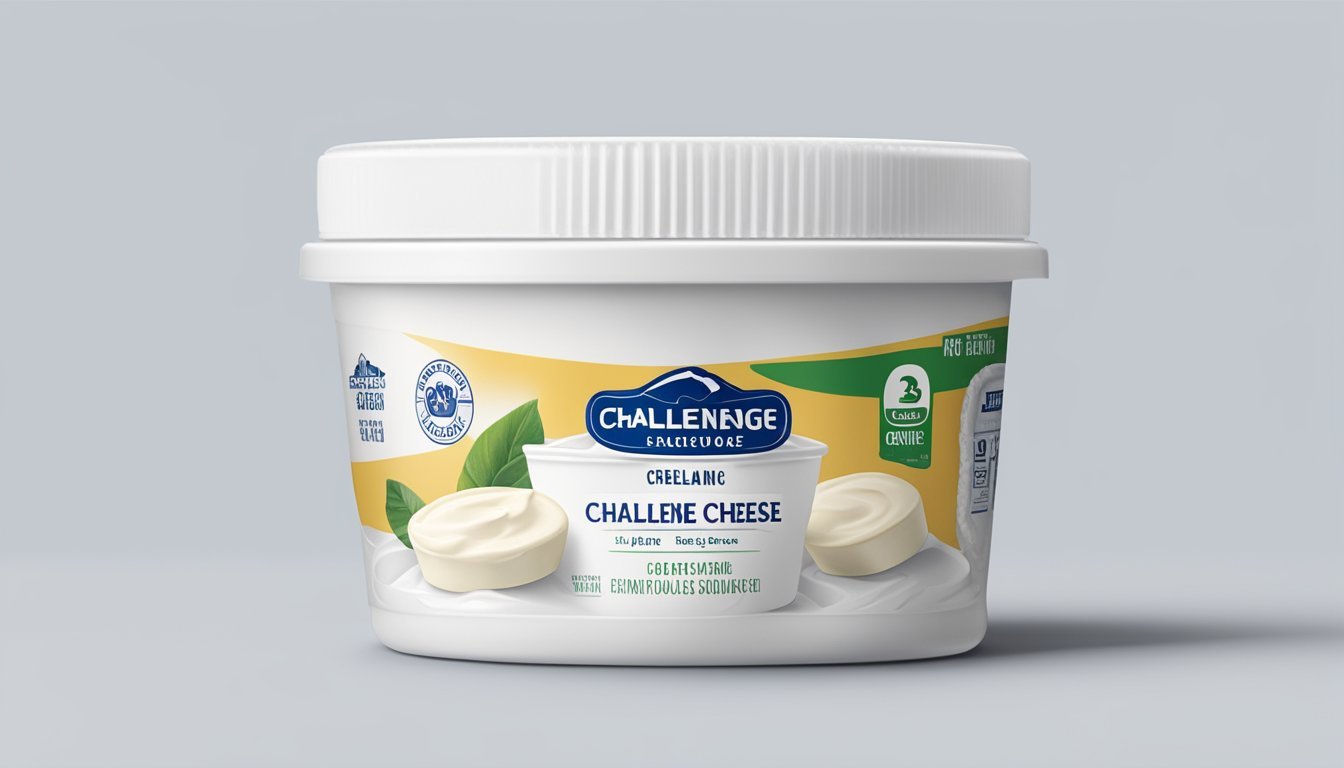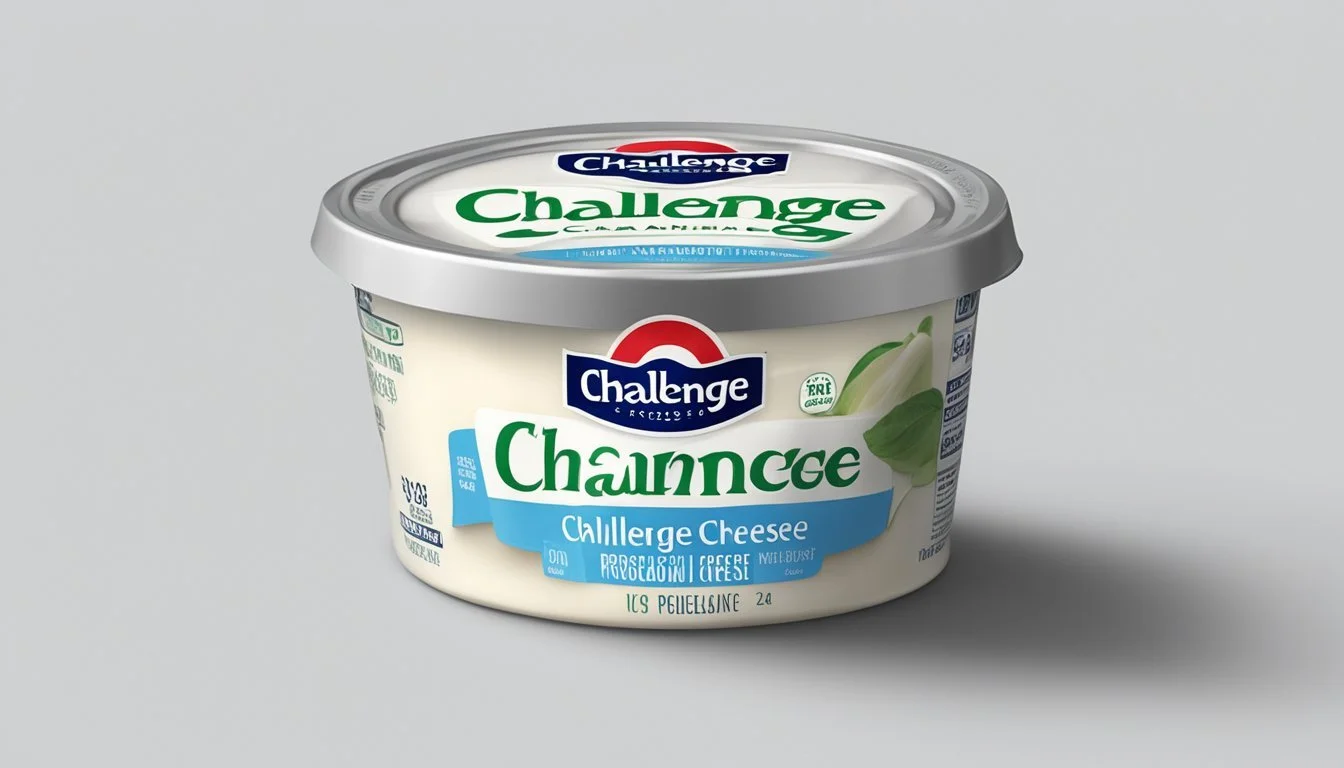How Long Does Challenge Cream Cheese Last?
Shelf Life and Storage Tips
When it comes to preserving the freshness of cream (how long does cream last?) cheese (how long does cheese last?), understanding its shelf life is crucial. Challenge Cream Cheese (how long does cream cheese last?), like other brands, is best when fresh; however, it does have a specific duration for which it can be safely consumed. Refrigeration plays a vital role in maintaining its quality. An unopened package of cream cheese (What wine goes well with cheese?) typically remains good for consumption for about a month past the 'Best When Purchased By' date, provided it has been stored at a constant temperature of 40°F or lower.
Once the package is opened, the shelf life of cream cheese reduces due to exposure to air and potential contaminants. In this state, it's important to use the cream cheese within a shorter time frame to ensure its safety and taste. The general guideline for an opened package is to consume it within 10 days to two weeks, again with proper refrigeration. It's essential to watch for signs of spoilage such as changes in texture, color, or odor which indicate that the cream cheese should no longer be consumed.
Understanding Cream Cheese
Cream cheese is a soft cheese, known for its smooth and spreadable texture, making it a versatile dairy product in various culinary applications. The primary ingredients typically include milk and cream, with certain brands adding stabilizers or preservatives to enhance quality and longevity.
When considering freshness, an unopened package of Challenge cream cheese maintains its quality for a period depending on the use-by date and storage conditions. It should be refrigerated consistently at or below 40°F to prevent spoilage. This soft cheese can contain preservatives that help to inhibit mold and bacterial growth, thus extending its shelf life while unopened.
Once opened, the freshness window decreases. Exposure to air and contaminants can accelerate spoilage. To gauge the remaining quality of an opened cream cheese, one should look for consistent color and texture as well as a neutral smell.
Here's a breakdown to assess cream cheese quality:
Color: It should maintain a uniform, white to pale cream color.
Texture: Look for a consistent, creamy texture. Any separation or dryness indicates degradation.
Odor: A fresh, mild, and slightly tangy smell is expected. Any sour or unpleasant odors suggest spoilage.
Mold: The presence of mold is a clear sign that the cream cheese should no longer be consumed.
This cheese's versatility extends from spreading on bagels to enhancing sauces, indicating its importance as a staple in kitchens. Understanding its properties is key to ensuring cream cheese is enjoyed at optimal freshness and safety.
Unopened Cream Cheese Shelf Life
The shelf life of unopened cream cheese is influenced by various factors including storage conditions and the expiration date indicated by the manufacturer. An unopened package of Challenge cream cheese can last beyond its printed date if it’s stored appropriately.
Storage Conditions for Unopened Cream Cheese
Temperature: For optimal shelf life, unopened cream cheese needs to be stored at a constant refrigerator temperature of 40°F (4°C) or below.
Refrigerator: It should be placed in the refrigerator, away from the door where temperature fluctuations are common.
Temperature Expected Quality At or below 40°F Maintains Quality
Environment: To extend shelf life, keep the cream cheese in its original retail packaging, which is designed to protect it from contamination and preserve its freshness.
Identifying Expiry of Unopened Cream Cheese
Expiration Date: The expiration date, use-by date, or sell-by date on an unopened package of Challenge cream cheese typically acts as a guideline for when the product may start to decrease in quality.
Date Label Purpose Sell-by Date Indicates peak quality as determined by the manufacturer Use-by Date Suggested last date for optimal quality Expiration Date Beyond this date, quality is not guaranteed
Assessment: Careful inspection for changes in texture, color, or smell can help determine if unopened cream cheese has expired, regardless of the date printed on the package. If any signs of spoilage are observed, the cream cheese should not be consumed.
In conclusion, while specific brands like Challenge may have unique preservatives or manufacturing processes that could affect shelf life, adhering to proper storage conditions and paying attention to the expiration date are essential practices to ensure the quality and safety of unopened cream cheese.
Opened Cream Cheese Shelf Life
Once cream cheese packaging is opened, its shelf life decreases significantly compared to when it’s unopened. Proper storage is crucial to ensure the cheese remains safe to eat and maintains its quality.
Factors Affecting Opened Cream Cheese
Storage: Opened cream cheese should be kept in the refrigerator immediately after use. The ideal temperature to store opened cream cheese is at or below 40℉ (4℃). To minimize air exposure, which accelerates spoilage, store the cream cheese in an airtight container or rewrap it with plastic wrap or aluminum foil.
Refrigeration: Consistent refrigeration is key to extending the shelf life of opened cream cheese. Temperature fluctuations can lead to a shorter shelf life and increased risk of bacterial growth.
Air Exposure: Minimizing the time that cream cheese is exposed to air reduces the likelihood of contamination and preserves its quality.
Recognizing Spoilage in Opened Cream Cheese
Knowing when cream cheese has gone bad is essential for food safety and preventing foodborne illnesses. Spoiled cream cheese can manifest through changes in:
Color: Any new discoloration or signs of mold typically suggest spoilage.
Smell: An off or sour smell is a strong indicator that cream cheese is no longer safe to consume.
Texture: Cream cheese that has a watery texture or that isn’t as spreadable as usual may be starting to spoil.
When in doubt about the condition of opened cream cheese, err on the side of caution and discard it to prevent health risks associated with contaminated food products. The typical shelf life for opened cream cheese, when stored correctly, is approximately 7-10 days. Always check your cream cheese before using, and remember that the sell-by or use-by date is a guideline; actual shelf life can vary based on numerous factors.
Proper Storage Techniques
When preserving the freshness and extending the shelf-life of Challenge cream cheese, adhering to proper storage techniques is crucial. One should maintain a refrigerator temperature at or below 40°F (4°C) to create an ideal storage condition for unopened cream cheese. Once opened, the cream cheese should be sealed in an airtight container or re-wrapped securely with plastic wrap or aluminum foil to prevent exposure to air, which can lead to spoilage.
Refrigerated Storage: Keep both opened and unopened cream cheese in the fridge, preferably in the main compartment rather than the door, where temperature fluctuations are more common.
Airtight Containers: To maintain an airtight seal and protect the cream cheese from absorbing other odors or flavors in the fridge, store it innately or transfer it to a dedicated airtight container after opening.
Freezing Cream Cheese: Freezing is an option for extending the cream cheese's usability beyond the printed date, but it might alter the texture, making it crumblier and less creamy. Store cream cheese in a freezer bag if freezing, and defrost in the refrigerator before use.
By diligently applying these storage methods, one can prevent early spoilage and sustain the quality of Challenge cream cheese for as long as possible.
Freezing Cream Cheese
Storing cream cheese in the freezer can significantly extend its shelf life, though it comes with changes in texture upon thawing. Proper freezing and thawing techniques can help in maintaining the quality of cream cheese for use in various recipes.
How Freezing Affects Cream Cheese
Freezing cream cheese can lead to a change in its texture, typically making it more crumbly and less creamy. The moisture content in cream cheese leads to ice crystal formation during freezing, which disrupts its smooth consistency. When thawed, the water separates from the cheese curds, resulting in a grainier texture. Full-fat cream cheeses tend to experience more fat separation, while reduced-fat varieties may handle the freezing process slightly better.
Tips for Freezing Cream Cheese
To preserve the best quality of cream cheese for later use, consider the following steps:
Packaging: Transfer the cream cheese into an airtight container or a freezer bag to protect it against freezer burn and odor absorption from the freezer.
Portioning: If you don't intend to use the entire block of cream cheese at once, cut it into smaller portions. Wrap each portion in foil before placing it in freezer bags. This makes thawing more manageable and prevents wastage.
Labeling: Write the date of freezing on the container or bag to keep track of how long it's been stored.
Thawing Frozen Cream Cheese
When you're ready to use your frozen cream cheese, follow these steps for safe thawing:
Refrigeration: Move the frozen cream cheese to the refrigerator, allowing it to thaw gradually over time. This slow process helps preserve the flavor and reduces texture changes. Thawing overnight is often enough.
Room Temperature: If pressed for time, you can thaw cream cheese on the countertop at room temperature, but this method may result in an even grainier texture due to faster moisture loss. It's best to plan ahead and use refrigerator thawing when possible.
Handling and Usage
When using Challenge Cream Cheese, it is crucial for consumers to follow specific handling and usage guidelines to ensure food safety and quality.
For opened containers of cream cheese, one should use clean utensils to avoid cross-contamination. It’s important to never double-dip, as this can introduce bacteria into the product, potentially reducing its lifespan and safety. Opened cream cheese should be used within 10 days for optimal quality.
Cream cheese is versatile in the kitchen. It acts as an essential ingredient in a variety of recipes, from cream cheese frosting for cakes to enriching savory cheesecake fillings. For cooking and baking, incorporate cream cheese to add creaminess to sauces or to create tender baked goods. Ensure it is at room temperature to blend smoothly with other ingredients.
Use Hygiene Tip Storage Tip Spreading on bagels or bread Use a clean knife for each use Close the lid tightly after use Flavored cream cheese creation Avoid reusing utensils between flavors Refrigerate promptly after preparation Making dips or frostings Keep separate from raw foods Store any leftovers in an airtight container
Whether the product is plain or flavored, maintaining proper hygiene is essential. After use, the cream cheese should be promptly returned to the refrigerator to preserve its freshness. While spreading on bread, or when incorporating cream cheese into various spreads and frostings, one should always ensure the cream cheese is kept at a safe temperature.
Overall, by following these simple guidelines, Challenge Cream Cheese can be a safe and delicious addition to everyday cooking and baking, as well as a staple for special occasions.
Cream Cheese Varieties and Substitutes
Cream cheese is a versatile dairy product beloved for its richness and creamy texture. It comes in several varieties, catering to different dietary preferences and culinary requirements. Reduced-fat cream cheese offers a lower-calorie alternative, maintaining a similar flavor profile while cutting down on fat. Whipped cream cheese is lighter and more spreadable, achieved by incorporating air during processing.
When it comes to flavor, flavored cream cheeses are infused with ingredients like herbs, fruits, or spices, adding a unique twist to the classic taste. These soft cheeses (What wine goes well with soft cheeses?) are immensely popular as spreads on bagels and in various recipes. Conversely, for baking or cooking, substitutes might be necessary if cream cheese isn't available, or if one is looking for a different nutritional profile or taste.
Several soft cheese options can act as cream cheese substitutes:
Buttermilk cheese provides a tangy flavor and can replace cream cheese in dips and spreads.
Soft cheeses, such as Neufchâtel, offer a similar texture and slightly less fat.
In contrast, hard cheeses are not typically used as a direct substitute due to their different texture and flavor profiles.
Substitute Best Use Case Texture Thick Strained Yogurt Dips, Spreads Thick, Creamy Neufchâtel Baking, Spreads Similar to Cream Vegan Cream Cheese Spreads, Cooking (Dairy-Free) Creamy, Spreadable
When choosing a substitute, one should consider the intended use – whether it's for spreading, baking, cooking, or as a flavor booster. Each alternative will bring its own qualities to a dish and could impact overall taste and texture.
Cream Cheese in Recipes
When incorporating cream cheese into recipes, its freshness can impact the final product's quality. In baking, such as making a cheesecake, the texture of the cream cheese is crucial for achieving a creamy filling without lumps. Whether you're preparing the custard-like filling or a velvety cream cheese frosting, the consistency and temperature of the cheese will affect its blendability with other ingredients like sugar and cinnamon.
Cream cheese is not only integral for creating smooth textures but also for imparting a rich flavor. It's often used in recipes for frostings and fillings where it's combined with other elements such as brown sugar to enhance the taste. In cooking, cream cheese can be used to thicken sauces or as a base for creamy dips.
Shelf Life Refrigerated (Opened) Room Temperature Cream Cheese Up to 2 weeks Up to 2 hours
When working on a crust, cream cheese should be well chilled to maintain a firm texture, allowing it to blend properly with other ingredients like butter or graham crackers. Keep in mind that recipes will not suffer if cream cheese's texture changes slightly due to freezing. However, when spreads or direct toppings are concerned, using fresh cream cheese is ideal for the best taste and texture.
Always check for spoilage signs like changes in color, smell, or texture before incorporating cream cheese into any recipe. Adhering to these considerations ensures that cream cheese adds the desired richness and smooth consistency in every culinary creation.
Health and Safety Considerations
When discussing the longevity of Challenge Cream Cheese, health and safety should be paramount. Consumers must be vigilant regarding the product's condition to avoid food safety issues. Cream cheese can become a breeding ground for bacteria and mold if not stored correctly, increasing the risk of foodborne illness.
Signs of Spoilage:
Discoloration: Any change from the natural white or cream hue.
Odor: A sour or unpleasant smell is a clear indicator.
Texture: Cream cheese should not be dry or have a presence of liquid.
Mold: Any visible mold means the product should be discarded immediately.
To mitigate health risks, individuals should ensure that the cream cheese is stored at or below 40°F (4°C). Once opened, the cheese should be sealed in an airtight container, possibly with a layer of plastic wrap to reduce exposure to air, where contamination from other food items can occur. Challenge Cream Cheese that is unopened can usually last for several weeks past its "sell-by" date if these conditions are met.
Consuming spoilt cream cheese may result in food poisoning, with symptoms that can range from mild to severe. It's crucial to err on the side of caution; when in doubt, it is safer to discard questionable cream cheese rather than risk consuming a potentially hazardous product.
Frequently Asked Questions
How long does unopened Challenge Cream Cheese last in the refrigerator?
Unopened Challenge Cream Cheese typically lasts in the refrigerator for 1 month past the sell by date if stored at or below 40°F.
Is opened Challenge Cream Cheese still safe to consume after the sell by date?
Once opened, Challenge Cream Cheese should be consumed within 1-2 weeks for optimal freshness and food safety. Transfer it to an airtight container, placing plastic wrap directly on the product to minimize air exposure.
Can Challenge Cream Cheese be frozen to extend its shelf life?
Yes, Challenge Cream Cheese can be frozen for up to 2 months. However, freezing may alter its texture, making it less creamy. Use frozen cream cheese for cooking or baking rather than as a spread.
What are the signs of spoilage in Challenge Cream Cheese?
Spoiled cream cheese may exhibit a sour smell, mold, a watery texture, or a discoloration. Do not consume cream cheese showing any of these signs.
Are there proper storage techniques to prolong the shelf life of Challenge Cream Cheese?
Store it in its original packaging until opened. Then, place it in an airtight container in the coldest part of the refrigerator, away from temperature fluctuations. Do not “double-dip” to prevent bacterial growth.
What is the difference in shelf life between hard cheese and Challenge Cream Cheese?
Hard cheeses have a longer shelf life compared to soft cheeses like cream cheese due to lower moisture content which discourages bacterial growth.










